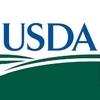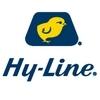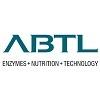Check out what is new in Poultry Industry
Find the best technical articles, forums, and videos on Poultry Industry at Engormix. Enter now and interact with the world's largest agricultural social network.
INTRODUCTION In line with the tremendous progress that has been made in meat-type duck production, digestibility and balance experiments are necessary to fill the dearth of information on the nutrient digestibility of widely used feedstuffs. Digestibility experiments for the evaluation of nutrient disappearance along the gastrointestinal tract align with the need for precise feed formulation to match animals’ requirements for optimal performance; and minimize the excretion...
Comments : 0
Recommendations: 0
.jpg&w=3840&q=75)
Kostas Mountzouris (Agricultural University of Athens) shares his research on modeling responses through molecular analytical data, linked to animal homeostasis, during the 11th Symposium on Gut Health in Production of Food Animals in St. Louis, USA....
Comments : 0
Recommendations: 2
.jpg&w=3840&q=75)
Mueez Ahmad (Arm & Hammer) comments on the best practices to achieve antibiotic-free production, during the 11th Symposium on Gut Health in Production of Food Animals in St. Louis, USA....
Comments : 0
Recommendations: 2
.jpg&w=3840&q=75)
Theresia Lavergne (Natural Biologics) comments on her research on the antiviral properties of medium-chain monoglycerides in pigs with PRRS challenge, as well as future tests on poultry viruses, during the 11th Symposium on Gut Health in Production of Food Animals in St. Louis, USA....
Comments : 0
Recommendations: 0


Developing effective natural solutions for animals - Liptosa: 2020 Summary and 2021 Challenges
Suggested link
.jpg&w=3840&q=75)
Marcela Uhart (Director, Latin America Program, UC Davis One Health Institute) comments on virus reassortments, the role of migratory species, as well as possible measures, during Avicola Porcinos 2023 in Buenos Aires, Argentina....
Comments : 0
Recommendations: 0
.jpg&w=3840&q=75)
Ben Dellaert (Secretary General, AVINED / International Egg Commission), comments on the position of the IEC regarding avian influenza vaccination and the worldwide efforts to control the disease, during Avicola Porcinos 2023 in Buenos Aires, Argentina....
Comments : 0
Recommendations: 0
.jpg&w=3840&q=75)
Christophe Cazaban (Poultry Scientific Director, Ceva Animal Health) speaks on the different vaccines available on the market to fight this disease, as well as the benefits and limitations of known and new technologies, during Avicola Porcinos 2023 in Buenos Aires, Argentina....
Comments : 0
Recommendations: 0
.jpg&w=3840&q=75)
Alex Alonso Wang (Big Herdsman) shows their poultry and swine equipment, explaining the features and benefits of the layer cage and the sow pen, during the Avicola Porcinos Expo 2023 in Buenos Aires, Argentina....
Comments : 0
Recommendations: 0
.jpg&w=3840&q=75)
A roundtable featuring Mike Kogut (USDA), Annelies Kers (Utrecht University), Monika Proszkowiec-Weglarz (USDA) and Tim Johnson (University of Minnesota) starts an open discussion on how to agree on standard procedures for microbiome analysis, during the 11th Symposium on Gut Health in Production of Food Animals in St. Louis, USA....
Comments : 4
Recommendations: 3
.jpg&w=3840&q=75)
Mike Kogut, Chair of the Organizing Committee, talks about the meeting's most interesting discussions and announces the dates for the next edition....
Comments : 2
Recommendations: 3
.jpg&w=3840&q=75)

Introducing Afla-V ONE: Fast, precise aflatoxin detection for complete feeds and pet foods
Suggested link
INTRODUCTION Livestock monogastric species, including swine and poultry, are the main sources of meat; therefore, they are, at the same time, the main livestock species reared under intensive conditions (Eurostat, 2022). The pressure to increasingly optimize breeding resulted in antimicrobials often being used for both prophylactic and metaphylactic purposes to counteract the diseases of these animals or as growth promoters. It is currently commonly recognized that the misuse of...
Comments : 1
Recommendations: 0
INTRODUCTION Practical applications of agricultural wastes in poultry nutrition play an important role in replacing expensive ingredients and/or additives in their diet particularly after COVID-19 outbreaks in which an expected shortage of feed resources for animal nutrition may have occurred (1–3). Poultry are a valuable source of animal protein of high quality, and nutrition of poultry plays an essential role in controlling the balance of pro-oxidants and antioxidants and...
Comments : 0
Recommendations: 0
INTRODUCTION Avian coccidiosis is one of the most common enteric diseases of poultry, and it is caused by several protozoan parasites of the genus Eimeria (1). The disease is characterized by reduced weight gain and feed conversion efficiency and is the most economically significant parasitic infection of the global poultry industry (2). Eimeria tenella is one of the seven most prevalent Eimeria species in chickens; it is the causative agent of cecal coccidiosis, causing severe...
Comments : 0
Recommendations: 1
INTRODUCTION Campylobacter is a prevalent foodborne pathogen in poultry such as chicken and turkey. It causes foodborne disease in humans (campylobacteriosis) due to consumption of contaminated poultry products, thus constituting a major public health issue (Sahin et al., 2002; Newell and Fearnley, 2003). Control of Campylobacter in poultry to improve microbiological safety is a primary concern for consumers and government food safety agencies (Lin, 2009). Traditionally,...
Comments : 0
Recommendations: 0
1. INTRODUCTION Substantial efforts have been made to replace expensive cereals with cassava in poultry feeding. Cassava (Manihot esculenta crantz) contains a large quantity of starch, therefore it is certainly worthwhile to be used as an energy source for poultry feed [1]. However, cassava contain high level of insoluble fiber which are not well digested by poultry [2]. Over the past decade, dietary enzymes have been used as a tool to improve nutrient utilization in chicken...
Comments : 0
Recommendations: 0
INTRODUCTION Zinc (Zn) is an essential trace element in all living systems – from bacteria, plants and animals to humans – and plays an important role in various biological activities in animals, especially in fast-growing poultry (Liu et al., 2011). Poultry diets are commonly supplemented with Zn since many feed ingredients are marginally deficient in this trace element (Bao et al., 2007). The variable content of Zn in poultry feeds, particularly in the components...
Comments : 0
Recommendations: 3
DESCRIPTION OF PROBLEM Avian coccidial disease, endemic across worldwide broiler production, and can be exacerbated by the reuse of litter should oocysts shed from previous flocks build up and sporulate in the current flock. Coccidial species can infect the gastrointestinal tract from the duodenum to the ceca resulting in localized tissue damage and reduced performance and without treatment, potentially result in morbidity and mortality (Chapman, 2014). The morbidity and mortality...
Comments : 0
Recommendations: 2
.jpg&w=3840&q=75)
Mr. O.P. Singh, Managing Director of ABTL Enzymes, shares his experience and tips on some steps to develop a strong brand in this sector...
Comments : 0
Recommendations: 4
If there is one thing that has always characterised Liptosa , it is its entrepreneurial and innovative spirit , developing and manufacturing a wide range of solutions for the national and European market, and its firm commitment to internationalisation, reflected in its presence in more than 60 countries around the world . There is therefore no doubt about the fundamental role played by the Regulatory Affairs Department within the company and its crucial role in...
Comments : 0
Recommendations: 1
More recently, probiotics have attracted considerable attention in subsiding oxidative damage caused by heat stress in poultry. Numerous researchers have reported the potential benefits of probiotics in improving gut morphology and integrity in heat-stressed birds. Bacillus is of industrial importance several reasons, including its excellent safety record, rapid growth rate resulting in short fermentation cycles, and ability to secrete proteins into the extracellular medium....
Comments : 1
Recommendations: 1



.jpg&w=3840&q=75)
































